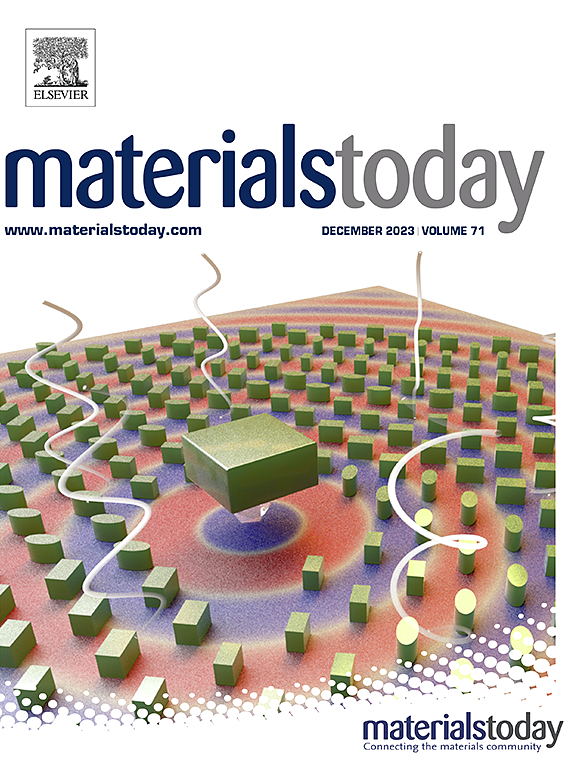Superior delamination resistant two-dimensional lamellar materials
IF 21.1
1区 材料科学
Q1 MATERIALS SCIENCE, MULTIDISCIPLINARY
引用次数: 0
Abstract
Numerous 2D sheets are generally exfoliated and prevalent to be assembled into macroscopic lamellar materials. However, these highly expected materials still inherit the easy exfoliation of 2D sheets and exhibit severe delamination failure problems, despite their outstanding in-plane performances and functions. Here, we find the increasing stack order of 2D sheets inversely aggravates delamination and uncover the hidden interlayer dissipation as the dominating mechanism. We propose a strong interlayer entanglement toughening strategy to greatly improve the delamination strength of graphene oxide papers by 268%, achieving a superior delamination resistance of benchmark natural nacres. The interlayer disentanglement offers extra dissipative sites to alleviate the stress concentration of the crack tip and suppress the crack propagation. This work provides an effective structural design strategy to resolve the intrinsic delamination problem of 2D lamellar materials, paving the way to realistic applications as structural materials and durable coatings.

优越的抗分层二维片层材料
大量的二维薄片通常被剥离,并普遍组装成宏观的层状材料。然而,尽管这些备受期待的材料具有出色的面内性能和功能,但它们仍然继承了二维薄片的易剥落和严重的分层破坏问题。在这里,我们发现增加二维薄片的堆叠顺序反而加剧了分层,并揭示了隐藏的层间耗散是主要机制。我们提出了一种强层间缠结增韧策略,使氧化石墨烯纸的分层强度大幅提高268%,达到了基准天然珍珠的优异抗分层性能。层间解缠提供了额外的耗散位,减轻了裂纹尖端的应力集中,抑制了裂纹的扩展。本研究为解决二维层状材料固有的分层问题提供了一种有效的结构设计策略,为其作为结构材料和耐用涂层的实际应用铺平了道路。
本文章由计算机程序翻译,如有差异,请以英文原文为准。
求助全文
约1分钟内获得全文
求助全文
来源期刊

Materials Today
工程技术-材料科学:综合
CiteScore
36.30
自引率
1.20%
发文量
237
审稿时长
23 days
期刊介绍:
Materials Today is the leading journal in the Materials Today family, focusing on the latest and most impactful work in the materials science community. With a reputation for excellence in news and reviews, the journal has now expanded its coverage to include original research and aims to be at the forefront of the field.
We welcome comprehensive articles, short communications, and review articles from established leaders in the rapidly evolving fields of materials science and related disciplines. We strive to provide authors with rigorous peer review, fast publication, and maximum exposure for their work. While we only accept the most significant manuscripts, our speedy evaluation process ensures that there are no unnecessary publication delays.
 求助内容:
求助内容: 应助结果提醒方式:
应助结果提醒方式:


